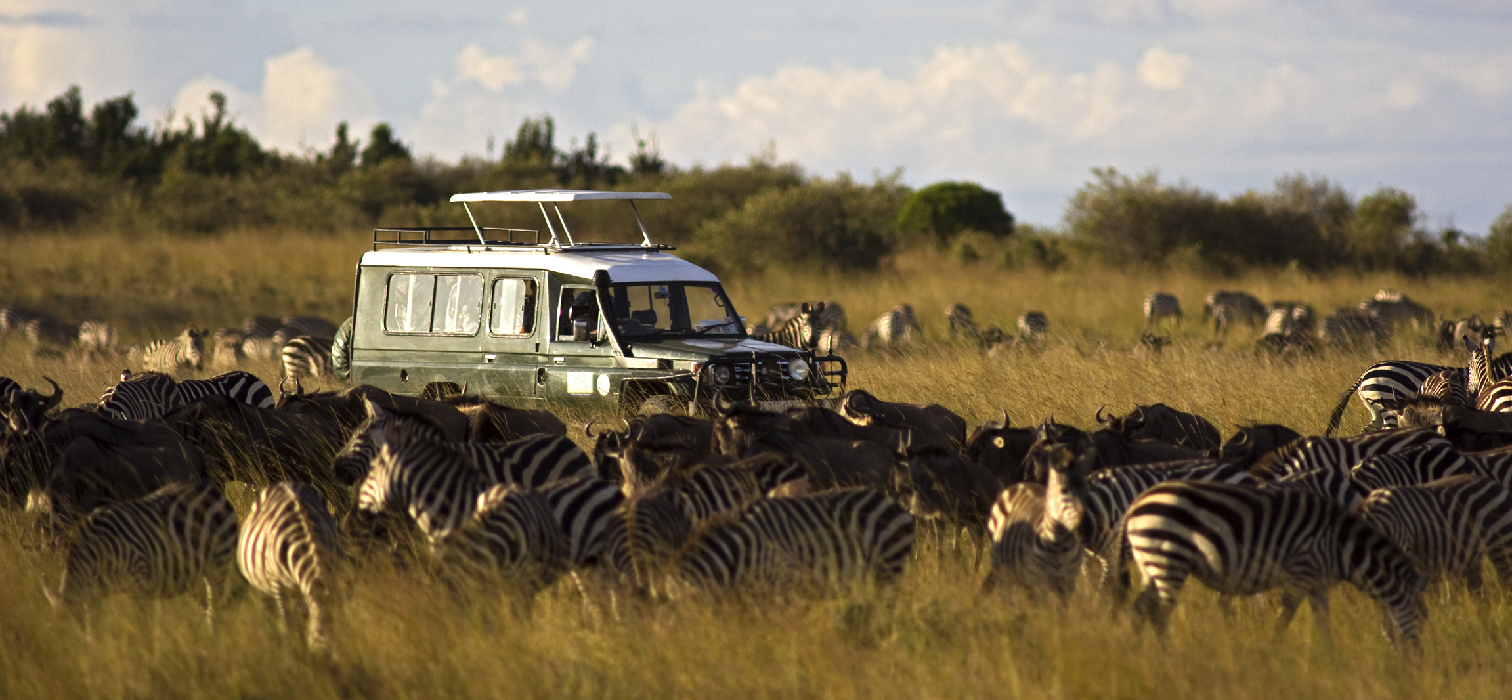
For those who think that best summer vacations are in the seasides, we recommend that they turn their route to nature for the Great Wildebeest Migration in East Africa, which has been the subject of documentaries.
Every year, one of the world’s largest animal migrations takes place in the African savannahs. The journey is not easy for the two million wildebeest, zebras and gazelles that migrate between Tanzania and Kenya, two neighboring East African countries, hoping to find food and water by following the rain. With herds of lions, crocodiles, scavenging vultures and hyenas waiting for them in the vast savannahs, the migrating herds face a life-and-death struggle. This year-round circular migration takes place between Serengeti National Park (Tanzania) and Maasai Mara National Park (Kenya). And of course, Africa’s most adventurous safaris take place during this period.
So, when and where can you watch the Great Wildebeest Migration? This is a question that requires accurate information and timing. Because the Great Wildebeest Migration depends on animal behavior and seasonal conditions, and in recent years it has been affected by climate change. Unseasonal rainfall (early or late) has a significant impact on the migration movement of animals. Therefore, it is useful to do good research before planning your trip to Africa.

However, we can easily say that the next three to four months are the best time for the Great Wildebeest Migration. Those who can spare a week from their sea vacation can witness one of nature’s most beautiful shows. Let’s take a closer look at the next four months for proper planning.
June-July
The waters of the Grumeti River, one of the most important areas on the Great Wildebeest Migration route in Serengeti National Park, begin to decrease during these months. Wildebeest and zebras can easily cool off in this river. But the river is full of crocodiles. Some of the predatory scenes you see in the Great Migration documentaries take place here. The crocodiles easily prey on the animals trying to cool off; the survivors try to get to Kenya, to the Maasai Mara National Park as soon as possible. The migratory movement moves northwards. One group has already crossed the northern Serengeti and reached Kenya.
August-September
Most of the herds have crossed into Kenya. They gather on the Maasai Mara plains, having suffered serious losses due to hungry crocodiles in the Mara River, which serves as the border between the Serengeti and the Maasai Mara. It is the perfect time to witness the spectacular crossing of the Mara River. August and September are the best times to watch this spectacular event.

October-November
The herds begin to migrate back to Tanzania, to the Serengeti, where the rainy season begins. The Mara and Grumeti rivers again become the address of adventurous scenes. In the nature of survival of the fittest, similar actions forms the backdrop for breathtaking nature photographs.
In short, those who want to watch the Great Wildebeest Migration should prefer the north of the Serengeti and Kenya’s world-famous national park Maasai Mara from late June to mid-October.
Where to Stay?
There are many safari camps and lodges in the Serengeti and Maasai Mara for those who want to watch the Great Wildebeest Migration. The important thing is to determine which region you need to be in on the date you are going and plan your accommodation accordingly. The guide above will shed light on this. Some of the camps you choose for your safari vacation are permanent camps that always serve in the same spot, while others are dismantled and set up according to the migration movement and change their location throughout the year. A quality mobile camp where you will find adventure and comfort together is one of the best choices for the Great Wildebeest Migration. Authentic tented camps, where you can sleep at night by hearing animals, watch the stars while sipping a drink around the campfire, and experience bucket showers in canvas bathrooms, are the addresses of true adventure in Africa.




